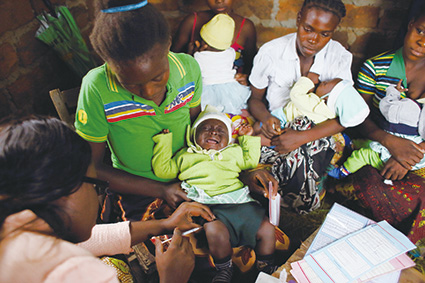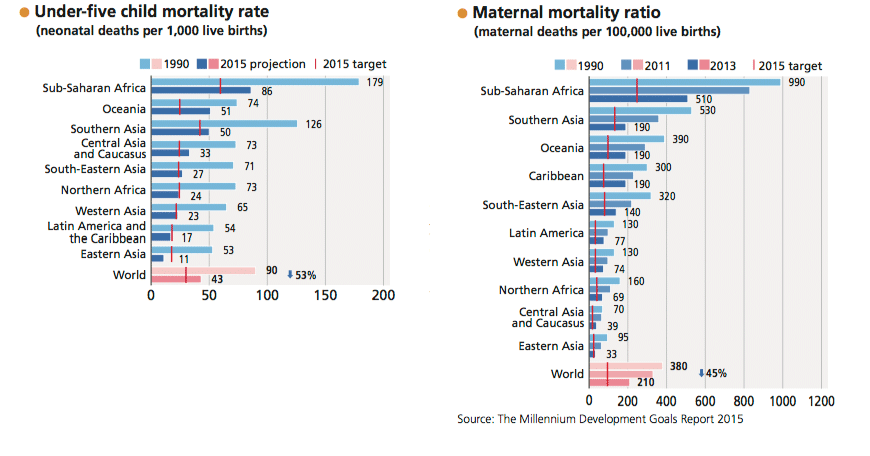Section 3 MDG Progress Status
2. Remaining challenges

Parents and children from rural areas in the Chisamba District in Zambia receive a health checkup. (Photo: Atsushi Shibuya / JICA)
Despite the steady gains, there remain targets that are difficult to achieve, especially in the areas of education, maternal and child health, and sanitation.
In the area of education, although the goal was to achieve universal primary education by 2015, the enrolment rate in developing regions increased from 80% in 1990 to only 91% in 2015. While the literacy rate among youth increased and the narrowing gender gap was progressed, the efforts did not culminate in the achievement of this goal.
In the area of maternal and child health, while the global under-five child mortality rate decreased by 53% between 1990 and 2015, the target to reduce the mortality rate to one-third of the 1990 level was not achieved. As for the maternal mortality ratio, the target was to reduce it to one-fourth of the 1990 level by 2015, but the ratio ultimately dropped by no more than 45%.
In the area of sanitation, the target was to halve the proportion of the population without access to an improved sanitation facility. However, the proportion was not halved, declining from 46% in 1990 to no more than 32% in 2015.
The lack of uniformity in the MDG progress status across the world merits attention. As was noted earlier in connection with the progress status of the goal to eradicate extreme poverty, improvement in the situation has tended to be slow in Sub-Saharan Africa. Delays in reaching the development goals have been noticeable also in regions such as South Asia and Oceania (island countries). Such uneven progress across regions is another remaining challenge.


